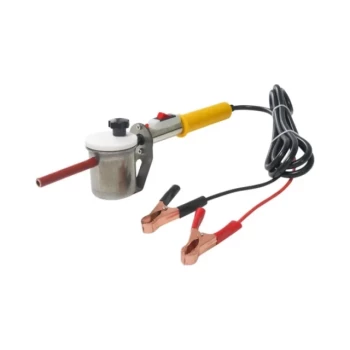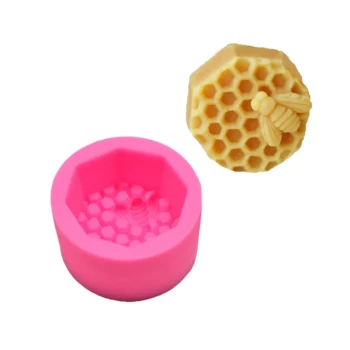The primary consideration for using oxalic acid in the summer is that its effectiveness is severely limited by the presence of a large brood nest. Since oxalic acid only kills Varroa mites on adult bees (phoretic mites), it cannot reach the majority of mites reproducing within capped brood cells. This makes a single summer application a low-impact treatment on the colony's total mite population.
A single oxalic acid treatment during summer is not a complete mite management solution. Its value is found in highly specific, strategic applications, primarily when a colony is broodless or as part of a multi-application regimen.

The Core Challenge: The Varroa Mite Reproductive Cycle
To use any treatment effectively, you must first understand the pest. The Varroa mite's life cycle in the summer is the single biggest factor limiting the impact of an oxalic acid application.
Why Summer Limits Oxalic Acid's Reach
In the summer, a healthy, laying queen ensures the colony has a large amount of sealed brood. This is the mite's nursery.
Most of the colony's Varroa population—often up to 80%—is inside these capped cells, feeding on bee pupae and reproducing.
Oxalic acid, whether applied as a dribble or vapor, does not penetrate the wax cappings of these cells. It only kills the much smaller percentage of mites riding on the backs of adult bees.
Calculating the True Impact
A single treatment may kill a high percentage of the mites it touches (the phoretic ones), but this represents a small fraction of the total mite load.
If only 20% of your mites are on adult bees, even a 95% effective treatment will only reduce your colony's total mite count by about 19% (0.20 * 0.95). This is not enough to protect a colony through the season.
Strategic Applications for Summer Treatment
While a single treatment on a brood-filled hive is insufficient, oxalic acid can be highly effective when used strategically to overcome the challenge of the brood cycle.
The "Broodless" Window Strategy
The most effective use of oxalic acid is on a colony with no capped brood. In this state, nearly all mites are phoretic and exposed to treatment, resulting in very high efficacy.
Beekeepers can create or take advantage of a broodless period in several ways:
- New Packages or Swarms: Treat them before the first generation of brood is capped.
- Artificial Swarms: Making a "split" and leaving one half queenless creates a natural brood break.
- Queen Caging: Intentionally caging the queen for ~16-21 days will create a broodless window for a highly effective treatment.
The "Multiple Application" Strategy
Another strategy involves repeated applications of oxalic acid vapor (OAV). This is not a one-time treatment.
By vaporizing the hive every 4-5 days over a period of ~21 days, you kill the phoretic mites present during each treatment. As new mites emerge with hatching bees, the subsequent treatment kills them before they can enter another cell to reproduce.
This method is labor-intensive and requires precise timing to be effective.
Understanding the Trade-offs and Safety Protocols
Using any mite treatment requires a clear understanding of the risks to your bees, yourself, and the potential for error.
Risk to Brood and Queen
The dribble method, which involves mixing oxalic acid with sugar syrup, can be hard on open brood and potentially harmful to the queen if applied directly to her. High ambient temperatures during summer can also compound the stress of any treatment on the colony.
Application Method Matters
The references describe the dribble method: a liquid solution is trickled into the seams of bees. It is simple and requires minimal equipment.
The other common method is vaporization (OAV), where oxalic acid dihydrate crystals are heated in a special device, filling the hive with a vapor. This method is generally considered gentler on bees and brood but requires more expensive equipment and stringent respiratory protection.
Essential Personal Protective Equipment (PPE)
Oxalic acid is a corrosive chemical that is toxic upon ingestion or inhalation. Do not handle it without proper PPE.
At a minimum, you must wear acid-resistant gloves and splash-proof safety goggles. If vaporizing, a properly rated acid-gas respirator is non-negotiable.
Correct Dosing is Non-Negotiable
Overdosing oxalic acid is toxic to bees and can cause significant harm to the colony. Follow dosing instructions precisely.
For the dribble method, the standard is a maximum of 50ml per colony, applying no more than 5ml in the space between each frame occupied by bees.
Choosing the Right Summer Mite Strategy
Your goal determines your strategy. A single oxalic acid treatment is a specific tool, not a universal solution for summer mite control.
- If your primary focus is treating a new swarm, package, or broodless colony: A single oxalic acid treatment is highly effective and one of the best tools for the job.
- If your primary focus is reducing mites in a strong, brood-filled colony: A single OA treatment is insufficient. You must either commit to a multiple-application OAV strategy or, more practically, use a registered summer miticide designed to work in the presence of brood.
- If your mite counts are already approaching threshold levels mid-summer: An OA treatment will not be enough to save the colony. An immediate application of a more potent, registered treatment like formic acid, thymol, or amitraz is necessary.
Ultimately, successful Varroa management relies on using the right tool for the job at the right time.
Summary Table:
| Key Consideration | Implication for Summer Use |
|---|---|
| Presence of Brood | Up to 80% of mites are protected in capped cells, limiting OA's reach. |
| Single Application Impact | Kills only phoretic mites (on adult bees), reducing total mite load by ~19%. |
| Effective Strategy | Requires a broodless period or multiple applications (every 4-5 days for 21 days). |
| Safety & Dosing | Mandatory PPE (gloves, goggles, respirator) and precise dosing (max 50ml/hive) are critical. |
Optimize Your Apiary's Mite Management Strategy with HONESTBEE
Managing Varroa mites effectively requires the right equipment and strategic planning. A single misstep can compromise colony health. HONESTBEE supplies commercial apiaries and beekeeping equipment distributors with the high-quality, reliable supplies needed for precise oxalic acid applications and other integrated pest management (IPM) protocols.
We provide the tools for success, from vaporizers for multi-application strategies to essential safety gear, helping you protect your investment and ensure strong, productive colonies.
Let's discuss your specific needs. Contact our expert team today to find the right solutions for your operation.
Visual Guide

Related Products
- Durable 12V Oxalic Acid Vaporizer for Varroa Mite Treatment Beehive Beekeeping Tool
- Oxalic Acid Vaporizer 12V for Bee Varroa Mite Treatment
- 12V Bee Mite Removal Evaporator Oxalic Acid Vaporizer for Bee Fumigation Treatment 180W Atomization
- High Performance Plastic Queen Excluder for Beekeeping and Apiary Management
- Professional Plastic Queen Excluder for Modern Beekeeping
People Also Ask
- What are the two approved methods of using oxalic acid for mite control? Dribble vs. Vaporization Explained
- Why is oxalic acid not used in summer? Timing is critical for effective Varroa mite control.
- What are the methods for applying oxalic acid in beekeeping? Control Varroa Mites Effectively
- What is the most common method of applying oxalic acid for mite control? Dribble vs. Vaporization for Varroa
- What should be done after applying the vapor? A Step-by-Step Guide to Sealing Your Hive



















